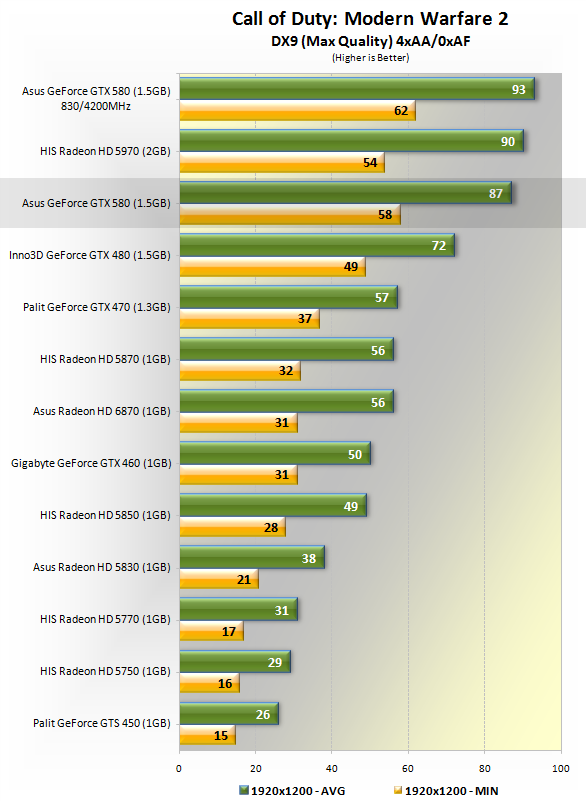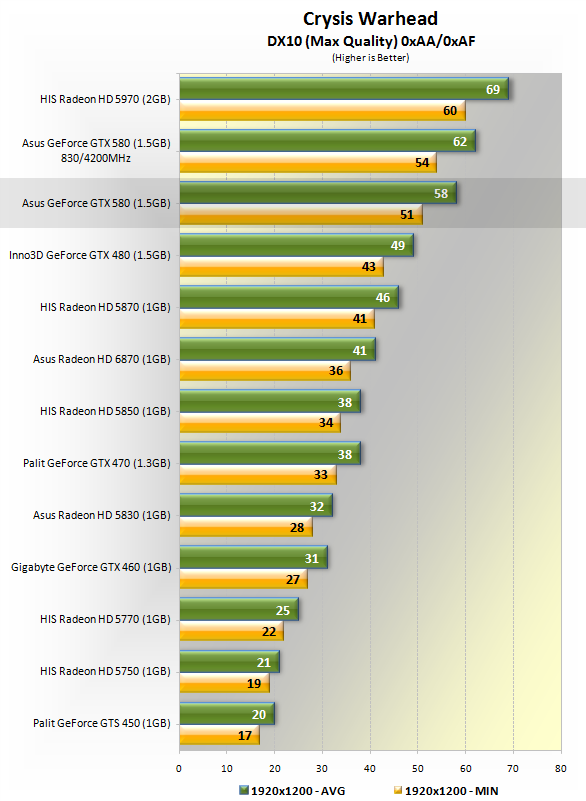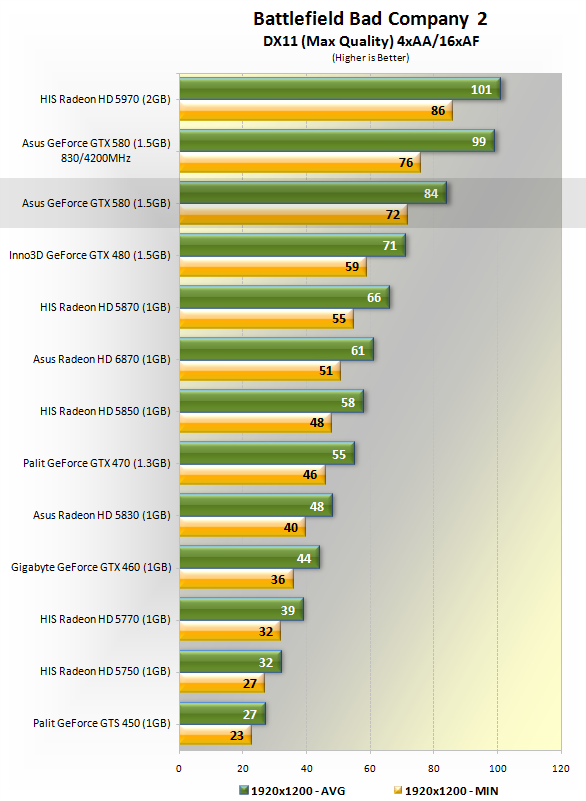Overclocking Performance



Using Furmark to measure stability we were able to achieve a core clock of 957MHz with a memory clock of 4.44GHz, but the system would crash as soon as we opened a game. We lowered the memory and GPU frequency by 10MHz and tried opening the game again to no avail – the system froze. After repeatedly reducing the frequencies, we eventually arrived at a core clock of just 830MHz with a memory clock of 4.2GHz, a far cry from the original overclock of 957MHz.
This mild overclock improved frame rates slightly, but it made very little difference overall. Given that the GF110 is the pinnacle of the Fermi architecture, the limited overclocking didn't shock us.
By increasing the core voltage to 1.25v with Asus' Smart Doctor software, we were able to reach 1000MHz. Unfortunately, this was extremely unstable and even at 960MHz we ran into issues. While we were able to complete a few tests, the results were not as expected.
Although there were no signs of throttling, the results were the same as those from the 830MHz overclock. Winding the frequency down to 900MHz didn't improve anything either, and we ultimately gave up. Despite the eye-catching "Voltage Tweak for up to 50% Faster" sticker on the box, we couldn't achieve anything close to that figure.
It should also be mentioned that the Asus ENGTX580 card comes "factory overclocked," but the meager 772MHz to 782MHz boost (that's 10MHz) should have given us an early hint of things to come.